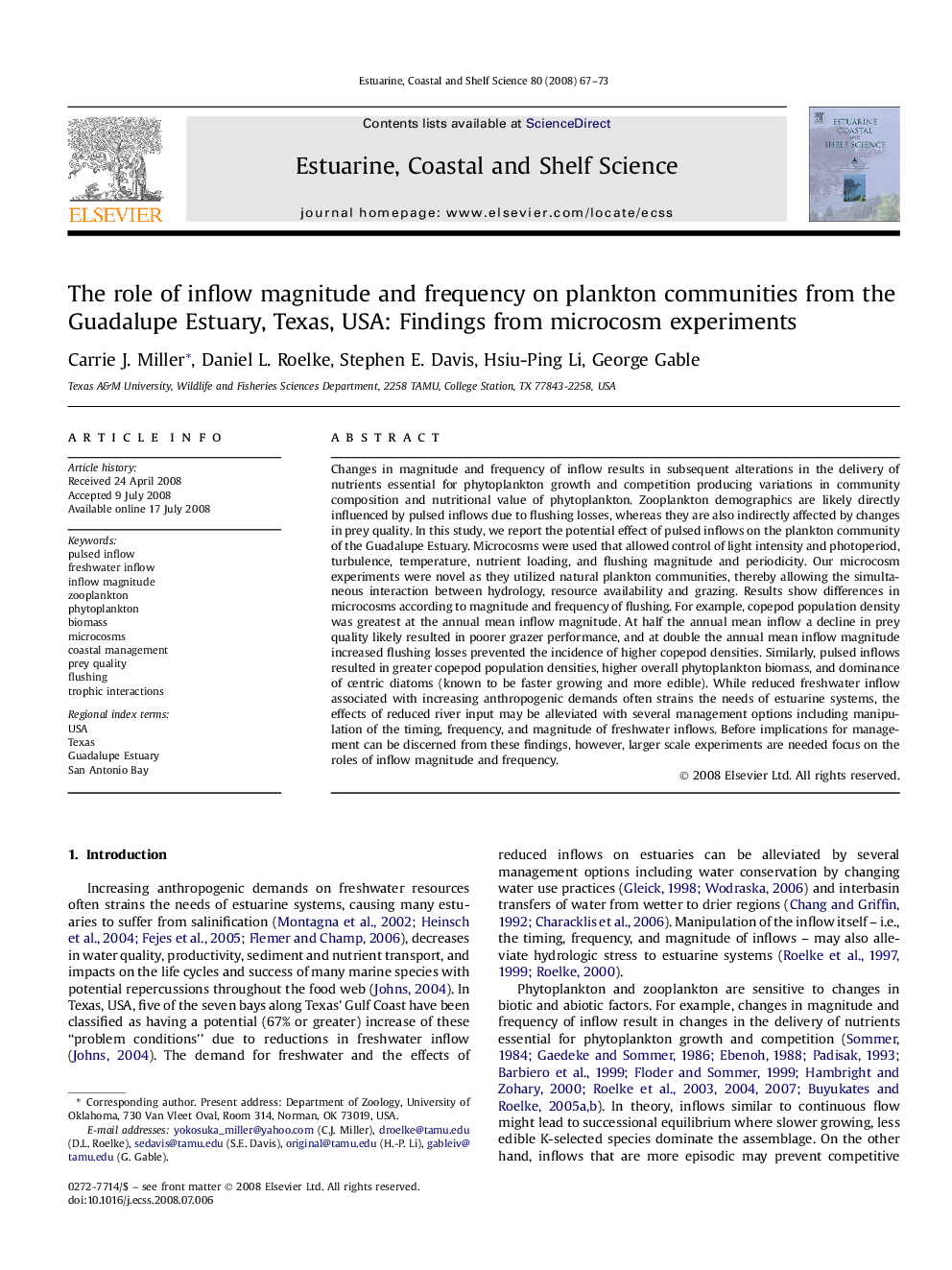| کد مقاله | کد نشریه | سال انتشار | مقاله انگلیسی | نسخه تمام متن |
|---|---|---|---|---|
| 4541430 | 1326724 | 2008 | 7 صفحه PDF | دانلود رایگان |

Changes in magnitude and frequency of inflow results in subsequent alterations in the delivery of nutrients essential for phytoplankton growth and competition producing variations in community composition and nutritional value of phytoplankton. Zooplankton demographics are likely directly influenced by pulsed inflows due to flushing losses, whereas they are also indirectly affected by changes in prey quality. In this study, we report the potential effect of pulsed inflows on the plankton community of the Guadalupe Estuary. Microcosms were used that allowed control of light intensity and photoperiod, turbulence, temperature, nutrient loading, and flushing magnitude and periodicity. Our microcosm experiments were novel as they utilized natural plankton communities, thereby allowing the simultaneous interaction between hydrology, resource availability and grazing. Results show differences in microcosms according to magnitude and frequency of flushing. For example, copepod population density was greatest at the annual mean inflow magnitude. At half the annual mean inflow a decline in prey quality likely resulted in poorer grazer performance, and at double the annual mean inflow magnitude increased flushing losses prevented the incidence of higher copepod densities. Similarly, pulsed inflows resulted in greater copepod population densities, higher overall phytoplankton biomass, and dominance of centric diatoms (known to be faster growing and more edible). While reduced freshwater inflow associated with increasing anthropogenic demands often strains the needs of estuarine systems, the effects of reduced river input may be alleviated with several management options including manipulation of the timing, frequency, and magnitude of freshwater inflows. Before implications for management can be discerned from these findings, however, larger scale experiments are needed focus on the roles of inflow magnitude and frequency.
Journal: Estuarine, Coastal and Shelf Science - Volume 80, Issue 1, 20 October 2008, Pages 67–73